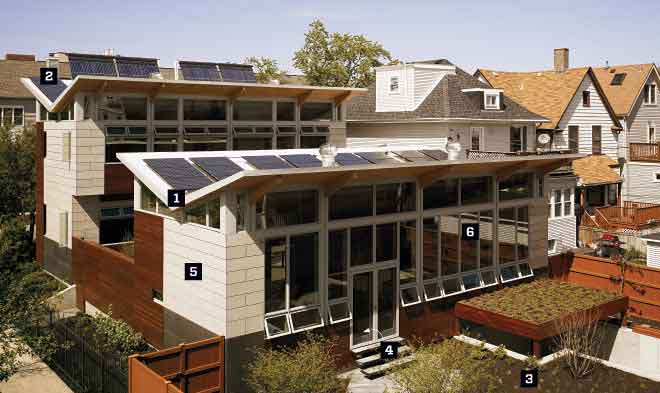A home profiled in Wired has six very interesting zero-carbon elements, but it’s the last two that fascinate me – thick walls and ultra-efficient windows. Thick walls mean “two 8-inch-thick concrete layers that protect the interior from outside temperature fluctuations. On hot days, the concrete absorbs and retains heat, keeping rooms cool; at night it slowly releases that heat to maintain steady temps around the clock.”
And the windows, “three coats of glazing give these windows more than twice the thermal resistance of standard double-paned glass.”
Both focus on the thermal energy efficiency of a home. With the goal of completely insulating a home – no heat lost or gained, no cool air lost or gained. Several homes are being built with the goal of 100% efficiency and that completely alters how a home functions. Things like the heat created by our 98.6 degree bodies become important. Facing a home in the sun (cold climates) or away from (hot climates) becomes essential.
And a lot of this can be accomplished with simple building materials, like concrete walls – which can easily be incorporated in building new homes. And the more complicated materials, like nanotech windows discussed in the article, can be placed on existing homes:
There’s some revolutionary nanotechnology that’s about to go into the glass—different kinds of coatings that make them five to 10 times more energy-efficient than double-paned windows. These windows are as energy-efficient as walls.
With these improvements the energy costs of heating and cooling should plummet, and traditional heaters and HVACs can be downsized or turned off for weeks at a time.
